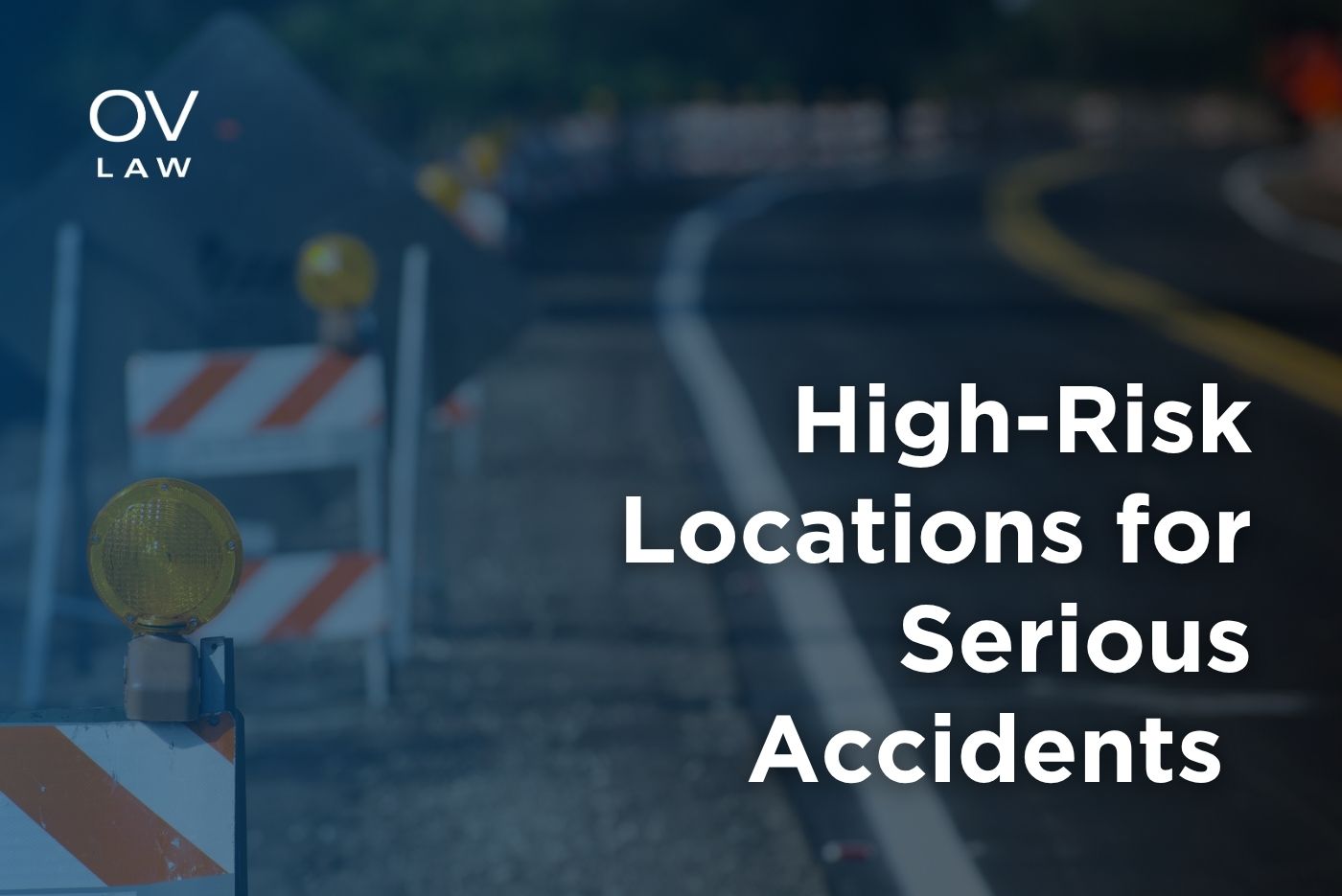High-Risk Locations for Serious Accidents

In Canada, the arrival of warmer weather is often accompanied by a marked increase in road construction activities on both highways and urban streets. The old adage that Toronto has two seasons – winter and construction – rings true to anyone who has resided in the GTA.
While these construction zones are crucial for the maintenance and enhancement of infrastructure, they present a series of challenges to motorists which contribute to a rise in motor vehicle accidents.
This assertion is supported by data from a 2022 Transport Canada Statistics study, which recorded 1,931 fatalities, 8,851 major injuries, and a total of 118,853 injuries resulting from motor vehicle accidents in construction zones on Canadian highways in 2022. Given these statistics, work zones can be classified as high-risk locations for motor vehicle collisions.[1]
Construction zones, which are designated areas where roadwork is underway, introduce several factors that heighten the risk of highway accidents. Various mechanisms contribute to the heightened likelihood of accidents within these areas, which include:
- Alterations to Traffic Patterns: Construction zones often force the need to alter the established flow of traffic, such as lane shifts, road closures, or merges. These unforeseen changes may not be readily anticipated by drivers, leading to confusion, erratic driving behavior, and collisions when motorists fail to adjust to the altered conditions in a timely and safe manner.
- Changes to Lanes of Travel: To help construction activities, lanes are regularly narrowed or reconfigured, resulting in a reduction of available space for vehicles. This narrowing can complicate navigation, particularly for larger vehicles, such as trucks, which are more prone to accidents in confined spaces where the margin for error is notably reduced.
- Change in Speed Limit: In construction zones, speed limits are typically reduced to protect both construction workers and motorists. However, drivers may fail to notice or may intentionally ignore these changes, thereby increasing the risk of accidents. Speeding through construction zones can result in a loss of vehicle control, rear-end collisions, or an inability to stop in time to avoid potential hazards in the road.
- Driver Frustration: The presence of construction activities, including roadwork machinery and workers, can serve as a significant source of distraction for drivers. This distraction may cause motorists to overlook important signs or slowing traffic, thereby increasing the risk of accidents. Additionally, the delays commonly associated with construction zones can result in driver frustration, which may manifest in aggressive driving behaviors such as speeding, tailgating, or abrupt lane changes. This results in a greater likelihood of accidents.
Lowering these risks requires multiple improvements and changes to behavior including the implementation of clear and visible signage, adequate lighting, strict enforcement of speed limits, and public education campaigns aimed at raising awareness about the dangers of aggressive driving within construction zones. Addressing these challenges is critical to enhancing road safety and reducing the incidence of motor vehicle accidents in work zones.
If you have any questions about your car accident in a contrition zone, get in touch with a personal injury lawyer.
[1] Canadian Motor Vehicle Traffic Collision Statistics: 2022
Written By

Thomas is an Associate at Oatley Vigmond. His practise is entirely devoted to representing clients who have suffered a serious personal injury and is committed to helping clients achieve the compensation they deserve. Thomas previously worked for a prominent Toronto Insurance Defence firm where he defended insurance companies in motor vehicle accidents as well as other insurance related lawsuits.
